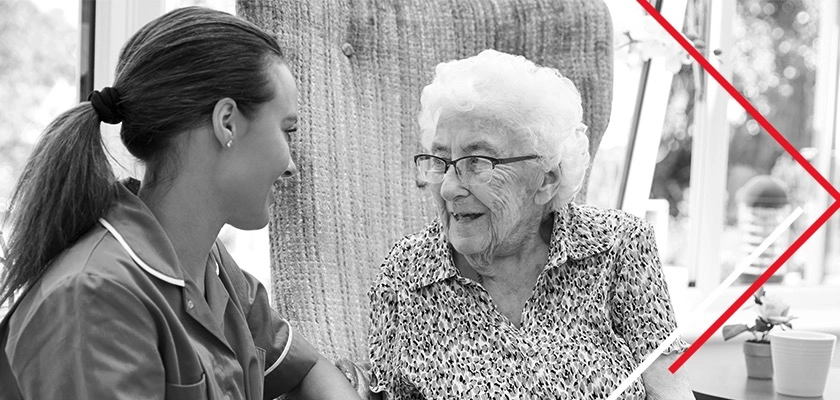"COVID-19 and the Crisis in Nursing Home Care" - Jill Quadagno, Ph.D. | October 2021
Nursing home residents and employees were one of the most affected demographics of the COVID-19 pandemic. Why were these facilities impacted and what has changed?
Professor Emerita
Florida State University
Author of: Aging and the Life Course: An Introduction to Social Gerontology

On February 29, 2020, a five-star rated nursing home in Kirkland, Washington, reported the first U.S. death from COVID-19, a 50-year-old man who was not a resident of the facility. More worrisome, 27 of the 108 residents tested positive, and 25 of the 180 staff members had some symptoms. The Kirkland incident was the first COVID-19 outbreak in a long-term care facility in the United States (Boodman and Branswell, 2020). One year later, at least 130,174 nursing home residents and 1,623 staff had succumbed to the virus, accounting for more than one-third of all U.S. COVID-19 deaths (Center for Medicare Advocacy, 2021). More deaths likely occurred because the Centers for Disease Control were not formally tracking the number of homes or the number of people infected in them.
How did the nursing home crisis escalate so rapidly and target the most vulnerable with such deadly efficiency?
One answer resides in the characteristics of nursing homes. Nursing homes are an example of what Goffman (1961) calls a total institution. The central features of total institutions are the breakdown of normal barriers that separate the main spheres of life—sleep, work, and leisure—and the handling of human needs by a bureaucratic organization. Usually, institutional control of residents’ lives is tempered by visits from family and inspections by state regulators. When states went into lockdown in March 2020, however, nursing homes were restricted from having any visitors, including family members, ombudsmen, and inspectors. As a result, they lost transparency and accountability.
Also contributing to the crisis was the failure of state governments. Many states responded quickly to slow the spread of the virus in other organizations, closing schools, canceling sporting events, and shutting bars and restaurants, but they largely ignored nursing homes. There were no programs or initiatives to move residents to safer settings. In many instances, residents with COVID-19 were not quarantined but were allowed to interact with other residents (AARP, 2020). When nursing homes did try to shield non-COVID-19 residents by sending infected residents to hospitals, hospitals sent them back.
An additional problem was that facilities designated as “COVID-19 only” received significantly higher reimbursements per resident from Medicaid (the main payor of nursing home care) than what they usually received (Center for Medicare Advocacy, 2021). That well-meaning policy backfired by creating perverse financial incentives. To make room for COVID-19 patients, some nursing homes discharged non–COVID-19 residents to motels, homeless shelters, or worse. When such abuses came to light, the nursing home industry responded by lobbying for legislation that would shield them from lawsuits.
The nursing home crisis was also a product of preexisting staffing practices. The aides who provide care for residents are themselves vulnerable individuals, mostly women and typically members of minority groups or immigrants. These workers are low-paid and overworked, and many work two jobs. In addition, opportunities for advancement are few, and management-employee relations are poor. All these conditions create stress and burnout. Even in the best of times, nursing homes have high levels of staff turnover, at times exceeding 100 percent each year. Staff turnover, in turn, leads to worse care for residents.
The pandemic created a virtual tsunami of conditions that exacerbated the existing problems in delivering quality care. In many facilities, aides lacked adequate protective equipment. They were forced to use trash bags as gowns and bandanas as masks and to make their own face shields. Many got sick, died, or quit, causing severe staff shortages. Nursing home watchdogs were deluged with reports of residents kept in soiled diapers, left with untreated bedsores, and deprived of food and water (Sedensky and Condon, 2020). The result was numerous—and mostly uncounted—deaths from neglect.
The inability of the government at all levels to protect nursing home residents represents a massive public policy failure. Although a senior health official did ask governors to test all residents and staff in their states, tests were in short supply and results often took weeks. In the interim, the virus rampaged through these facilities, killing residents and staff alike.
Could anything have been done to avert the crisis?
In hindsight, we know that the federal government should have been more proactive in providing funding for testing and for hiring additional staff. Nursing homes should have been required to follow the lead of schools and create regular online opportunities for residents to stay in touch with family and friends. They also should have been required to report COVID cases and deaths. In the wake of the pandemic, it has become clear that more regulations are needed to make nursing homes safer, along with sufficient resources to ensure these regulations are enforced. COVID-19 did not create the nursing home crisis. It pulled back the curtain to reveal the precarious state of long-term care for older people in the United States.
Questions for Discussion
- How did the fact that nursing homes are total institutions contribute to the COVID-19 crisis?
- Why did COVID-19 spread so rapidly in nursing homes compared to other institutions like schools or offices?
- How did high levels of staff turnover increase the risk of death among nursing home residents?
References
AARP. (2020, December 8). “Four Months that Left 54,00 Dead From COVID-19 in Long-Term Care: An American Tragedy.” AARP Bulletin. https://www.aarp.org/caregiving/health/info-2020/covid-19-nursing-homes-an-american-tragedy.html
Boodman, Eric and Helen Branswell. (2020, February 29). “First COVID-19 Outbreak in a U.S. Nursing Home Raises Concerns.” STAT News. https://www.statnews.com/2020/02/29/new-covid-19-death-raises-concerns-about-virus-spread-in-nursing-homes/
Center for Medicare Advocacy. (2021, March 21). “Nursing Homes Have Received Billions of Dollars in Direct Financial and Non-Financial Support During Coronavirus Pandemic.” Special Report, https://medicareadvocacy.org/report-snf-financial-support-during-covid/
Goffman, Erving. (1961). Asylums. Garden City, NY: Anchor.
Sedensky, Matt and Bernard Condon. (2020). “Not Just COVID: Nursing Home Neglect Deaths Surge in Shadows.” AP News. https://apnews.com/article/nursing-homes-neglect-death-surge-3b74a2202140c5a6b5cf05cdf0ea4f32



